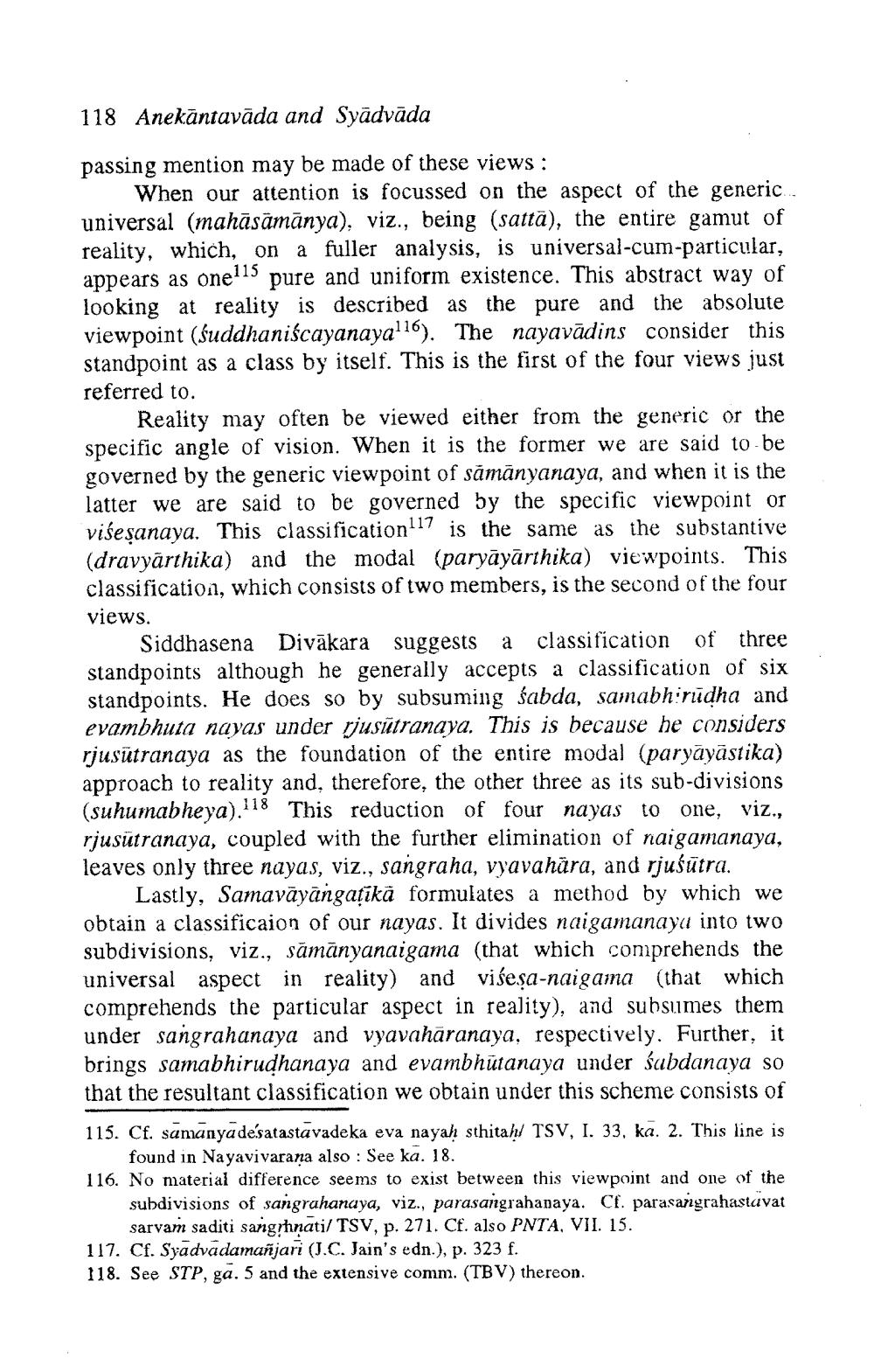________________
118 Anekāntavāda and Syādvāda
passing mention may be made of these views :
When our attention is focussed on the aspect of the generic universal (mahāsāmānya), viz., being (sattā), the entire gamut of reality, which, on a fuller analysis, is universal-cum-particular, appears as onells pure and uniform existence. This abstract way of looking at reality is described as the pure and the absolute viewpoint (suddhaniscayanayal16). The nayavādins consider this standpoint as a class by itself. This is the first of the four views just referred to.
Reality may often be viewed either from the generic or the specific angle of vision. When it is the former we are said to be governed by the generic viewpoint of sāmānyanaya, and when it is the latter we are said to be governed by the specific viewpoint or višesanaya. This classification117 is the same as the substantive (dravyārthika) and the modal (paryāyārthika) viewpoints. This classification, which consists of two members, is the second of the four views.
Siddhasena Divākara suggests a classification of three standpoints although he generally accepts a classification of six standpoints. He does so by subsuming sabda, samabh:rīdha and evambhuta nayas under rjusūtranaya. This is because he considers rjusūtranaya as the foundation of the entire modal (paryāyāstika) approach to reality and, therefore, the other three as its sub-divisions (suhumabheya).118 This reduction of four nayas to one, viz., rjusutranaya, coupled with the further elimination of naigamanaya, leaves only three nayas, viz., sangraha, vyavahära, and rjuśütra.
Lastly, Samavāyāngațīkā formulates a method by which we obtain a classificaion of our nayas. It divides naigamanaya into two subdivisions, viz., sāmānyanaigama (that which comprehends the universal aspect in reality) and višeşa-naigama (that which comprehends the particular aspect in reality), and subsumes them under sangrahanaya and vyavahāranaya, respectively. Further, it brings samabhirudhanaya and evambhutanaya under śubdanaya so that the resultant classification we obtain under this scheme consists of 115. Cf. samanyadesatastāvadeka eva nayah sthitaḥ/ TSV, I. 33, ka. 2. This line is
found in Nayavivarana also : See ka. 18. 116. No material difference seems to exist between this viewpoint and one of the
subdivisions of sangrahanaya, viz., parasangrahanaya. Cf. parasangrahastavat
sarvam saditi sangļhinati/ TSV, p. 271. Cf. also PNTA, VII. 15. 117. Cf. Syadvadamañjari (J.C. Jain's edn.), p. 323 f. 118. See STP, ga. 5 and the extensive comm. (TBV) thereon.




